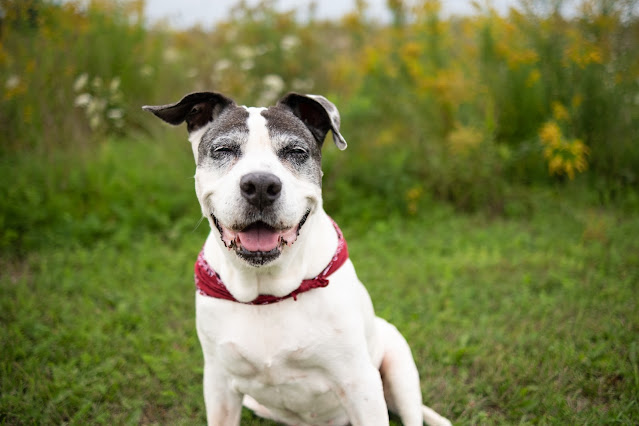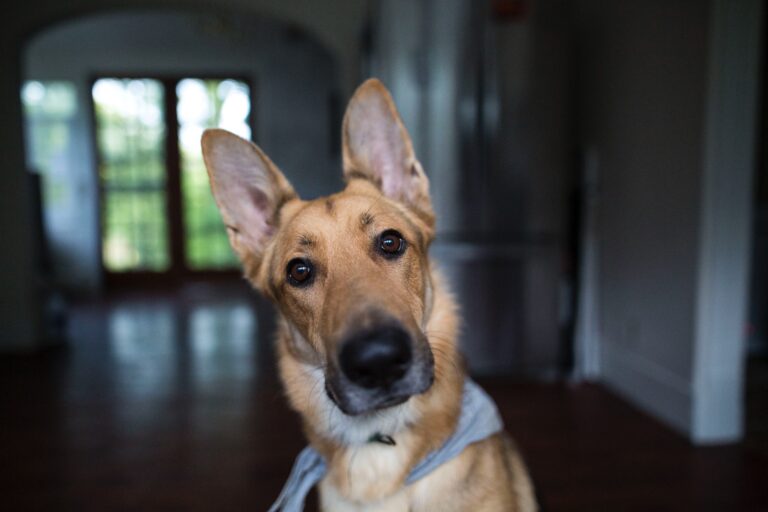How Long Does It Take To Socialize A Shy Dog

How Long Does It Take To Socialize A Shy Dog: Did you know that socializing a shy dog can take anywhere from a few weeks to several months? It’s a process that requires time, patience, and understanding. But why does it vary so much? And what steps can you take to help your shy dog become more comfortable in social situations?
In this discussion, we will explore the factors that affect the time it takes to socialize a shy dog, the importance of socialization, and practical tips to help you navigate this journey. Whether you have a newly adopted rescue or a naturally timid pup, this information will provide you with valuable insights and strategies to support your shy dog’s socialization journey. So, let’s get started and uncover the secrets to helping your four-legged friend blossom into a confident and well-adjusted social companion.
Factors Affecting Socialization Time
The time it takes to socialize a shy dog can vary depending on several factors. These factors include the individual dog’s personality and temperament, previous experiences, the owner’s commitment and consistency, the extent of the dog’s shyness and fearfulness, and the presence of any underlying health issues or physical limitations. Understanding these factors will help you determine the appropriate approach and expectations for socialization training.
Every dog is unique, and their personality and temperament greatly influence the time it takes for socialization. Some dogs may be naturally more outgoing and friendly, making the process easier and quicker. However, shy dogs may require more time and patience to overcome their fears and develop confidence in new social situations.
Previous experiences also play a significant role in socialization time. If a dog has had negative interactions or traumas, they may be more hesitant and fearful in new situations. It is crucial to be aware of their past and work to create positive associations and experiences to counteract any fearful behavior.
Your commitment and consistency in applying socialization techniques are essential for successful results. Regular training sessions, exposure to different environments, and positive reinforcement will help your shy dog build trust and overcome their fears gradually.
The extent of your dog’s shyness and fearfulness will also impact the duration of socialization efforts. Some dogs may only require a few weeks of training, while others may need months of consistent work to become comfortable with new people, animals, and environments.
Lastly, any underlying health issues or physical limitations may affect the time required for successful socialization. It is essential to consult with a veterinarian to rule out any medical conditions that could be contributing to your dog’s fearful behavior.
Importance of Socializing a Shy Dog
Socializing a shy dog is of utmost importance as it helps them develop confidence, and resilience, and overcome their fears. By exposing them to new people and environments, you can gradually help them become more comfortable and less reactive. Techniques like positive reinforcement and rewards can be used to encourage desired behavior, making the socialization process a positive and enjoyable experience for both you and your dog.
Benefits of Socializing Shy Dogs
Helping your shy dog socialize is essential for their overall well-being and development. Socializing a nervous or timid dog can have numerous benefits, both for the dog and for you as their owner. By exposing your shy dog to new experiences, people, and other animals, you can help them build confidence and overcome their fears. Socialization during the critical period of 2-14 weeks is especially important, as it allows your dog to develop comfort and familiarity with their surroundings.
Proper socialization can prevent anxiety, aggression, and reactivity in dogs, leading to well-adjusted behavior. Additionally, socializing shy dogs can improve their emotional health, increase their confidence, and strengthen the bond between you and your furry companion. Socialized shy dogs are more likely to enjoy visits to the vet, have improved behavior, and lead a more active and cheerful life. So, don’t hesitate to help your dog overcome their shyness and start socializing them today.
Techniques for Shy Dogs
To effectively socialize a shy dog, it’s important to utilize techniques that gradually expose them to new experiences and environments, providing clear direction, leadership, and positive reinforcement. Start small and avoid overwhelming environments when socializing your fearful dog. Encourage prosocial behavior by allowing dogs to sniff and explore each other at a comfortable distance.
Assess your dog’s comfort level and find a group of dogs or activities that suit their preferences. Puppy classes, organized by certified trainers, are recommended for socialization, focusing on engaging with other dogs. Gradually expose your dog to new people and experiences, ensuring they feel safe and supported. Use training techniques that emphasize positive reinforcement to build confidence and modify behavior. With patience and consistency, your shy dog can become more comfortable in social situations.
Timeframe for Socialization
During the critical 2-14 weeks period, it is crucial to prioritize early socialization for shy dogs in order to build resilience and confidence. This timeframe is particularly important because it is when a dog is most receptive to new experiences and learning. Socialization should begin as early as possible, starting small and gradually exposing the shy dog to new environments, people, and other dogs. Consistent exposure and positive experiences over time can help the shy dog become more comfortable and less fearful.
However, it is important to note that there is no set timeframe for socializing a shy dog. Each dog is different and may require varying amounts of time to fully adjust. Patience and understanding are key during this process, as it may take weeks, months, or even longer for a shy dog to become fully comfortable. Seeking professional guidance can be beneficial, especially if there are signs of fear or aggression. By investing time and effort in socializing a shy dog, you can help them overcome their fears and develop into a confident and well-adjusted companion.
Identifying Shyness Vs. Fearfulness in Dogs
When it comes to identifying shyness vs. fearfulness in dogs, it’s important to pay attention to their behaviors and body language. Shy dogs may exhibit hesitation or wariness, while fearful dogs may display signs of distress such as panting, pacing, or excessive barking. By observing their tail position, ear set, and overall posture, you can gain valuable insights into their emotional state and determine the best approach for socialization.
Shyness Vs. Fearfulness
Identifying the difference between shyness and fearfulness in dogs is crucial for effective socialization and addressing any underlying issues they may have. Shyness in dogs can be attributed to genetics, lack of socialization, or past trauma, while fearfulness is a more intense reaction to specific triggers. When faced with new situations, shy dogs tend to exhibit avoidance or withdrawal, whereas fearful dogs may display extreme reactions like trembling or aggression.
To socialize a shy dog, gradual exposure and positive reinforcement can help them become more comfortable over time. However, fearful dogs may require professional intervention and specialized desensitization techniques. As pet parents, understanding the root cause of your dog’s behavior is essential in devising a successful socialization plan and providing appropriate dog training throughout their puppy development.
Recognizing Shy Behaviors
To better understand and address the behaviors exhibited by shy and fearful dogs, it is important to recognize the subtle differences between their reactions in various situations. Shy dogs may exhibit avoidance, hiding, or submissive behaviors when approached by unfamiliar people or dogs. They may show signs of discomfort or nervousness in new environments or situations.
On the other hand, fearful dogs may display more extreme reactions such as cowering, trembling, or aggression when faced with perceived threats. They may react with heightened stress, panic, or even aggression in response to perceived threats or triggers. Understanding and differentiating between these shy and fearful behaviors is crucial for tailoring appropriate socialization strategies. By recognizing the specific behaviors exhibited by shy dogs, you can provide them with the necessary support and create a safe environment for their socialization.
Addressing Shy Dog’s Needs
Understanding the difference between shyness and fearfulness in dogs is essential for effectively addressing the needs of a shy dog. Shyness in dogs refers to their tendency to be reserved or cautious in new or unfamiliar situations. It is a personality trait that can be managed and improved with proper socialization. Fearfulness, on the other hand, is a more intense emotional response to specific stimuli, resulting in avoidance or defensive behaviors.
To address the needs of a shy dog, it is important to create a safe and positive environment for them to gradually build confidence. This can be done by exposing them to new experiences and people in a controlled and supportive manner. Patience, consistency, and positive reinforcement are key in helping a shy dog overcome their fears and become more comfortable in various social contexts. Seeking professional help, such as a certified dog trainer or behaviorist, can also be beneficial in addressing the specific needs of a shy dog.
Best Age to Begin Socialization
Starting socialization at the right age is crucial for shy dogs to build comfort and familiarity with their surroundings and other dogs. The best age to begin socialization for shy dogs is during the critical period of 2-14 weeks. This is the time when a puppy’s brain is most receptive to new experiences and learning. By exposing shy dogs to different people, dogs, and environments during this period, they are more likely to adapt positively to new experiences and environments.
Early exposure to socialization helps shy dogs become more comfortable with their surroundings and other dogs. It helps them build resilience and confidence, which are essential for their overall well-being. Socialization during the critical period ensures that the shy dog is more likely to develop into a well-adjusted and happy pet.
During this critical period, it is important to provide positive and controlled socialization experiences for shy dogs. This can include supervised playdates with well-socialized dogs, introductions to new people, and exposure to different environments such as parks, streets, and public places. It is important to ensure that these experiences are positive and not overwhelming for the shy dog. Gradual exposure and positive reinforcement are key to helping them overcome their shyness.
Starting the Socialization Process
Now that you understand the best age to begin socialization for shy dogs, it’s time to discuss how to start the socialization process effectively. Introducing a nervous dog to socialize can be a delicate task, but with patience and the right approach, you can help your dog become more comfortable in social settings.
To start, it’s important to create small and controlled environments for your dog. This will help prevent overwhelming situations that may further increase their anxiety. Begin by walking your dog together with other dogs in a calm and neutral setting. This will allow them to gradually build familiarity and comfort with their canine counterparts.
During the initial interactions, allow the dogs to sniff and explore each other from a comfortable distance. This will help them ease into social interaction and reduce any potential tension. Pay close attention to your dog’s body language and assess their comfort level. If they show signs of stress or fear, give them space and try again later.
Teaching your dog positive and prosocial behavior is crucial in the socialization process. Encourage your dog to approach other dogs with confidence and in a friendly manner. Reward them for calm and relaxed behavior, and redirect any signs of aggression or fear. Consistency and positive reinforcement will go a long way in helping your dog feel more at ease in social situations.
Techniques for Socializing Shy Dogs
To effectively socialize a shy dog, it is important to employ specific techniques that can help them become more comfortable in social settings. Start by slowly introducing your shy dog to new environments and people, avoiding overwhelming situations that could cause anxiety. Gradually expose them to different stimuli, such as sights, sounds, and smells, while providing plenty of positive reinforcement and treats to encourage positive associations.
One technique for socializing shy dogs is to find a group of dogs or activities that suit their preferences. Some dogs may feel more at ease in smaller, calmer groups, while others may thrive in more energetic and playful settings. By allowing your shy dog to interact with other dogs in a contextually relevant and comfortable environment, they can gradually build confidence and learn appropriate social behaviors.
When socializing a shy dog, it is crucial to assess their comfort level and encourage prosocial behavior. Keep an eye on their body language and stress signals, such as tucked tails, lowered ears, or avoidance behaviors. If your dog shows signs of discomfort, take a step back and provide them with space and time to relax.
Remember to always reward positive behavior during socialization. Whether it’s offering treats, praise, or playtime, positive reinforcement can help your shy dog associate social interactions with positive outcomes. This will encourage them to approach new situations with less fear and anxiety.
Dealing With Distress During Socialization
Gradually introducing your shy dog to new people and environments is crucial for minimizing distress during the socialization process. Dealing with distress during socialization can be challenging, but with the right approach, you can help your dog become more comfortable and confident in various situations.
One important aspect of dealing with distress is using positive reinforcement and treats to encourage calm and positive behavior. When your dog displays signs of fear or anxiety, reward them with treats and praise for any small steps they take towards overcoming their fear. This helps create positive associations with new people and environments, making socialization a more positive experience for your dog.
It’s also essential to familiarize yourself with canine body language to recognize signs of distress. Dogs may display behaviors such as trembling, panting, avoiding eye contact, or cowering when they feel scared or overwhelmed. If you notice these signs, it’s crucial to adjust the socialization pace and give your dog the time they need to feel comfortable. Pushing them too quickly can worsen their distress and hinder their progress.
Creating a safe space for your dog to retreat to is another important strategy. When your dog becomes scared or overwhelmed, provide them with a designated area where they can feel safe and secure. This can be a crate, a quiet room, or a specific spot in your home. Allowing your dog to take breaks and decompress when they need to will help them build up their comfort level gradually.
If you find that your dog’s distress is persistent or intensifies, it may be beneficial to seek professional guidance or consider enrolling in training classes specifically designed for shy dogs. Trainers with experience in socializing shy dogs can provide valuable insights and techniques to help address your dog’s distress and anxieties effectively.
Avoiding Common Socialization Mistakes
When socializing your shy dog, it is important to be aware of common mistakes that can hinder their progress and cause unnecessary distress. By avoiding these common socialization mistakes, you can help your shy dog become more comfortable in new situations and with new people.
One common mistake to avoid is forcing your dog into uncomfortable situations. It is important to introduce your shy dog to new people, places, and situations gradually. Pushing them too quickly can overwhelm and stress them out, hindering their progress. Instead, be patient and understanding during the socialization process, allowing your dog to take their time to adjust and feel comfortable.
Using treats and rewards is another effective way to encourage positive interactions during socialization. By rewarding your dog for successful social behavior, you are reinforcing their confidence and helping them build positive associations with new experiences. However, if your dog’s fear or anxiety is severe, it may be necessary to seek professional help to address their specific needs.
It’s important to be mindful of not overwhelming your shy dog with too many new experiences at once. Gradually expose them to new people, places, and situations, giving them time to adjust and build confidence. Additionally, it is crucial to avoid exposing your dog to aggressive or unpredictable dogs, as this can be traumatic and hinder their progress.
Lastly, avoid punishing or scolding your dog for fearful behavior. This can exacerbate their anxiety and fear, making the socialization process even more challenging. Instead, provide them with reassurance and support, using positive reinforcement to encourage desired behaviors.
Hiring Professional Help for Socialization
If you’re struggling to socialize your shy dog, hiring professional help can be a valuable resource. A professional behaviorist or trainer can provide tailored strategies and techniques to address your dog’s specific needs, especially if they exhibit severe fear or aggression. They can guide you in creating a personalized socialization plan that takes into account your dog’s temperament, history, and comfort level.
Benefits of Professional Assistance
To ensure the successful socialization of your shy dog, consider the numerous benefits of hiring professional assistance. A certified trainer can provide valuable guidance and expertise, making the socialization process smoother and more effective. They can assess your dog’s behavior and create a customized training plan tailored to their specific needs. With their knowledge and experience, they can teach you how to reward your dog for positive behavior and help them overcome their shyness.
Additionally, a professional can help you navigate challenging situations, such as introducing your dog to new dogs at the dog park. They can teach you techniques to stay calm and use positive reinforcement to encourage your dog’s confidence and sociability. With professional assistance, you can ensure your shy dog receives the best support and guidance to thrive in social settings.
Finding the Right Trainer
To ensure you find the right trainer for your shy dog’s socialization needs, consider these key factors in hiring professional help. Look for a certified dog trainer or behaviorist who has experience in socializing shy dogs. It’s important to find a trainer who focuses on positive reinforcement techniques and understands the behavior of shy dogs.
They should be able to provide individualized training plans tailored to your dog’s specific socialization needs. Prioritize trainers who have a track record of successfully helping shy dogs overcome their fears and build confidence. Additionally, choose a trainer who offers ongoing support and guidance to help maintain your dog’s progress in socialization. Taking the time to find the right trainer will greatly benefit your shy dog’s socialization journey.
Timeframe for Shy Dogs to Become Socialized
Socializing a shy dog requires patience and consistency, as the timeframe for them to become socialized can vary depending on their temperament and past experiences. Some shy dogs may take several weeks to several months to become comfortable in social situations. It’s important to remember that each dog’s progress is unique, and there is no set timeline for socialization.
When socializing with a shy dog, it is crucial to start early. The socialization process should begin during the critical period of a puppy’s development, which is between three and fourteen weeks of age. Introducing them to new people, animals, and environments during this time can help build their confidence and reduce shyness later in life.
Gradual exposure is key when socializing a shy dog. Start by exposing them to low-stress situations, such as quiet walks in the neighborhood or controlled playdates with well-behaved dogs. As they become more comfortable, gradually increase the level of challenge by exposing them to busier environments, such as dog parks or pet-friendly events.
Positive reinforcement is essential throughout the socialization process. Reward your shy dog for calm and confident behavior, and use treats and praise to reinforce positive experiences. Avoid punishing or forcing them into uncomfortable situations, as this can worsen their shyness.
Seeking professional guidance from a certified trainer or behaviorist can greatly impact the timeframe for a shy dog to become socialized. They can provide personalized advice and guidance, helping you navigate any challenges and ensure a successful socialization process.
Using Supplements or Medications for Socialization
When working to socialize a shy dog, it’s important to explore all available options, including the use of supplements or medications under the guidance of a veterinarian or professional behaviorist. While behavioral and training methods should always be the first approach, supplements or medications can be considered as a last resort to help your dog become more comfortable around new situations.
Supplements can be helpful in easing anxiety and promoting relaxation in shy dogs. Calming pheromones, for example, mimic the natural pheromones that mother dogs release to comfort their puppies. These pheromones can help your dog feel more secure and reduce anxiety in unfamiliar environments. Herbal remedies containing ingredients like chamomile or valerian root may also have a calming effect on your dog.
If supplements alone are not enough, medications may be an option to consider. However, it’s crucial to consult with a veterinarian before starting any medication regimen. Anti-anxiety drugs, such as selective serotonin reuptake inhibitors (SSRIs), can help reduce fear and anxiety in dogs. These medications should only be prescribed and administered under the guidance of a professional, as they can have potential side effects and require careful monitoring.
When using supplements or medications, it’s important to closely monitor your dog’s response and adjust the dosage or approach as necessary. Every dog is unique, and what works for one may not work for another. It’s also essential to continue working on behavioral and training methods alongside the use of supplements or medications to help build your dog’s confidence and socialization skills.
How Long Does It Take To Socialize A Shy Dog Frequently Asked Questions
How Do You Socialize a Shy Dog?
To socialize a shy dog, start by introducing them to small and calm environments. Allow them to sniff and explore at a comfortable distance. Gradually expose them to new people and animals, rewarding positive behavior. Patience and consistency are key to building confidence and overcoming fear.
How Long Does It Take for a Shy Dog to Open Up?
It varies for each shy dog, but with techniques like positive reinforcement, patience, and socialization exercises, you can help them open up. Creating a safe and supportive environment is key.
Can a Shy Dog Become More Outgoing?
A shy dog can become more outgoing with the right approach. Ways to help include gradual introductions, positive reinforcement, and seeking professional help if needed. Patience, training techniques, and creating positive experiences are key to building confidence in a shy dog.
At What Age Is It Too Late to Socialize a Dog?
It’s never too late to socialize a dog, but early socialization is crucial. The critical period is between 2-14 weeks, building comfort and confidence. Gradual exposure to new people and environments, along with positive reinforcement, helps shy dogs develop social skills. Seeking professional help is recommended for severe cases.
Conclusion
In conclusion, socializing a shy dog requires time, patience, and consistency. Starting early during the critical period can help build comfort and familiarity. By gradually exposing the dog to new people, dogs, and situations, and using positive reinforcement, shy dogs can gain confidence and become more comfortable socializing. It is important to avoid pushing them too far too quickly and seek professional help if needed. With the right approach, shy dogs can overcome their shyness and enjoy positive social interactions.








